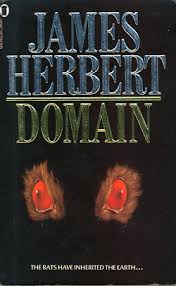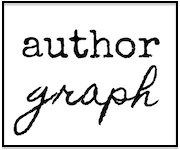The Rats And The Ruins: James Herbert’s Domain. By Simon Bestwick
The Rats And The Ruins: James Herbert’s Domain.
James Herbert’s career, of course, began with The Rats. It established his tradem ark style very early on: direct and confrontational, with solid, often working-class characterisation and a take-no-prisoners attitude. And it created a highly effective monster for the 1970s and ‘80s, imitated by a host of lesser writers pressing normally innocuous creatures into service as bloodthirsty flesh-eaters.
ark style very early on: direct and confrontational, with solid, often working-class characterisation and a take-no-prisoners attitude. And it created a highly effective monster for the 1970s and ‘80s, imitated by a host of lesser writers pressing normally innocuous creatures into service as bloodthirsty flesh-eaters.
Nearly all these imitations fell flat, because they were missing one vital ingredient: the ability to locate and tap into a deep, universal fear. Time and again, Herbert, at his best, had it.
Many people fear feral rats: dirty, disease-spreading creatures, vicious when cornered or when their prey was helpless (just ask Orwell’s Winston Smith.) Herbert, born and raised in London’s bombed-out post-war East End, knew that very well. By making them bigger, more aggressive and more ruthlessly cunning, he linked them to another primal dread – being eaten alive – and created a genuine nightmare creature, one he revisited in two further novels, Lair and Domain.
In Domain, Herbert’s instinct for finding a near-universal psychological pressure point was at its most unerring. He deployed the rats in a new, imaginatively challenging environment even more frightening – and plausible – than them: the aftermath of a nuclear attack.
The novel opens with a precise, clinical description of a nuclear bomb exploding over London, then leads into a demonstration of another of Herbert’s strengths: the vignette. The in-yer-face nature of his narratives always made a high casualty rate inevitable, but for those deaths to be anything more than splatter, they had to befall people we at least gave a damn about.
Herbert had honed the ability to paint a character in immediate, empathetic terms before killing them off, and he deploys it brilliantly here. We’re used to the opening chapter introducing our principal characters, and Herbert plays on that expectation: we meet in succession an elderly Jewish grandmother, a stingy garage owner, a high-class prostitute, a phone engineer in the Post Office Tower and a police constable on his first day on the job. We meet them, we share their hopes and fears, experience a flicker of hope that this one may be our protagonist, our anchor in the chaos that follows – and then they die.
Only at the end of the chapter, with the introduction of civil servant Alex Dealey, do we at last meet one of the book’s principal characters, and even he isn’t the main protagonist: that’s ex-pilot Mike Culver, who pulls Dealey to shelter.
Meanwhile, the rats, having sensed their human arch-enemy is now weakened, emerge from hiding in search of prey…
In the aftermath of the explosions, Culver, Dealey and, Kate, another survivor, find their way to a government blast shelter. After the worst of the fall-out has dispersed, they venture into the ruined city above; later still, forced out of the shelter, they search for the government’s central bunker, only to find that the rats have swarmed through it and killed everyone there.
More bleak vignettes are scattered through the book. A work-from-home businessman hides in his cellar with his family. A teenage girl is menaced by a rapist in the cinema where she and a hundred others have taken refuge. A misanthropic salesman finds he’s sharing his homebuilt blast shelter with a cat. None end with even a glimmer of hope. In some, the rats bring havoc and death, but it’s easy to think these are the lucky ones: the other cases are often more disturbing. The saddest and most haunting scene of all portrays a housewife, her mind broken; tying her dead family to chairs around the kitchen table and serving them a breakfast of mouldy, silverfish-ridden cereal, she chatters to them as if it’s just another day.
The rats were, themselves, the product of a mutation caused by nuclear testing, so in a sense the wheel has come full circle in Domain. Indeed, at the end Culver is haunted by his glimpse of a clutch of mutant baby rats, and their resemblance to human embryos, implying we have more in common with the rodents than we’d like to admit.
Domain, to be blunt, scared the living shit out of me when I read it aged eleven, and it wasn’t – most of the time – because of the rats. It’s probably Herbert’s best novel; I still remember it years later, and it’s partly responsible for making me still write weird shit today.
Simon Bestwick is the author of Tide Of Souls, The Faceless and Black Mountain. His short fiction has appeared in Black Static and Best Horror Of The Year, and been collected in A Hazy Shade Of Winter, Pictures Of The Dark, Let’s Drink To The Dead and The Condemned. His new novel, Hell’s Ditch – like Domain, a horror novel set in the aftermath of a nuclear strike – is out now.



[…] Source: The Rats And The Ruins: James Herbert’s Domain. By Simon Bestwick […]
The Rats And The Ruins: James Herbert’s Domain. By Simon Bestwick | Horror Reviews for You said this on December 9, 2015 at 3:47 pm |
Dear Mr. Graeme Reynolds, I have to say, you did it again, you really pissed me off with your last novel! You made me so angry, I cursed you, repeatedly (my way of judging good fiction, emotional investment ;o). I mean, back and forth between hating and loving it, and the ending, grave satisfaction… Congratulations! I’m hoping you have another trilogy in the pipeline as you’ve become one of my favorite contemporary writers. Thank you for an outstanding trilogy, Laurence Clark Quintessential perfunctory e-missive magically transported through the aether via fairy pigeon.
Thanks, Laurence. I’m still mulling over ideas for the next novel. I was going to go with zombies and something terrible from ancient legend, but have another idea crawling up from the depths of my consciousness that is demanding my attention.
In the meantime, check out any other books by Horrific Tales Publishing as I personally think that they are all outstanding. And Simon Bestwick’s latest book, Hell’s Ditch (the author of the blog post you just commented on) will be right up your street. I read a version of this book earlier in the year and if you like the mix of action, humour and horror in the High Moor series, I guarantee that you will love Hell’s Ditch.
[…] The Rats And The Ruins: James Herbert’s Domain […]
5 Must Read Horror Articles 14 December 2015 » This Is Horror said this on December 14, 2015 at 11:00 am |